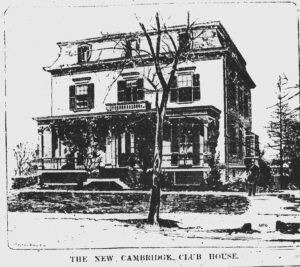The Remeasure of Agassiz
By Jasmine Laietmark, 2014
Cambridge was on the cutting edge of science in the 19th century. Unfortunately, several star academics used the banner of science to support bigoted ideologies. Luckily, the scientific method also brought redemption by the second half of the 20th century. The paleontologist and Agassiz resident Stephen Jay Gould took his forebears’ science head-on in his book The Mismeasure of Man. Targeting his neighborhood’s namesake, Gould publicly refuted the methods and conclusions of Louis Agassiz. He did this from the same Harvard halls Agassiz had walked –– in fact, Gould was the Alexander Agassiz Professor of Zoology, named after Louis’s scientist son.
While many applauded Gould’s critique of biological determinism, it was but one of his scientific transgressions. He became a controversial figure in the field of macroevolutionary studies, straying from the mainstream
evolutionary thought of his era when he and his partner, Niles Eldredge, argued that evolution as shown by the fossil record came in “fits and starts” rather than a steady lineage through a long period of time. This theory, known as punctuated equilibrium, challenged the idea of how evolution moves.
Gould’s outspoken style and flair for connecting science and baseball helped him become one of the most famous scientists of the 20th century. In his New York Times obituary, he is said to have “revived the art of the scientific essay.” His writings, that were accessible to a layperson, led to fame that is unusual for an evolutionary biologist.
He was even depicted as a character on the popular TV show The Simpsons. In 2001, Gould’s writings were assigned to students in the Agassiz School. On reading Gould’s account, ninth-grader Nathaniel Vogel was inspired to start the process that led to the school’s being renamed the Maria Baldwin School.


